- Hindquarters
They are lighter in bone than the forequarters. There is moderate angulation of stifle and hock. When viewed from behind, the rear legs are reasonably close and parallel, and the feet point straight ahead when standing or moving.The pekingese’s back legs are built lighter than the front legs. From a back view the legs are parallel and are a little longer than the front legs.
This is a picture of perfect hindquarters
Here are 2 examples of bad hindquarters
The knees are facing outward.
On this one the knees are inward.
- Forequarters The elbows should not be visible from a front view. The front legs are strong built, there is a slight curve from the leg to the the paw and the paw is slightly outward.
They are short, thick and heavy-boned. The bones of the forelegs are moderately bowed between the pastern and elbow. The broad chest, wide set forelegs and the closer rear legs all contribute to the correct rolling gait. The distance from the point of the shoulder to the tip of the withers is approximately equal to the distance from the point of the shoulder to the elbow. Shoulders are well laid back and fit smoothly onto the body. The elbows are always close to the body. Front feet are turned out slightly when standing or moving. The pasterns slope gently.These are correct front legs
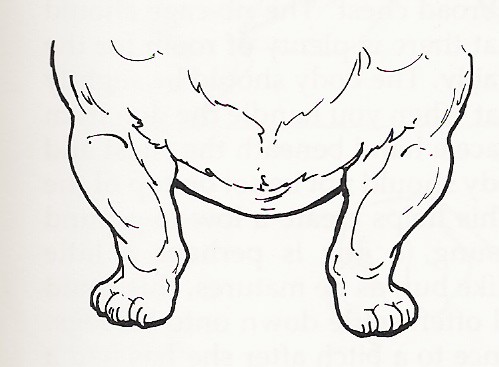
Here are 2 examples of incorrect front legs shape.
On this one the front legs are inward and the elbows are out
On this one the front legs are too straight and too long
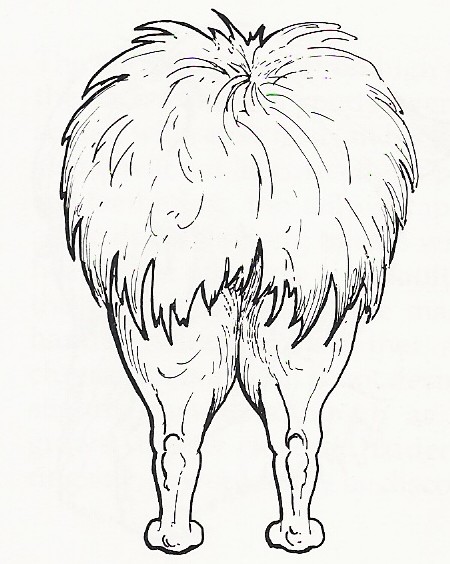
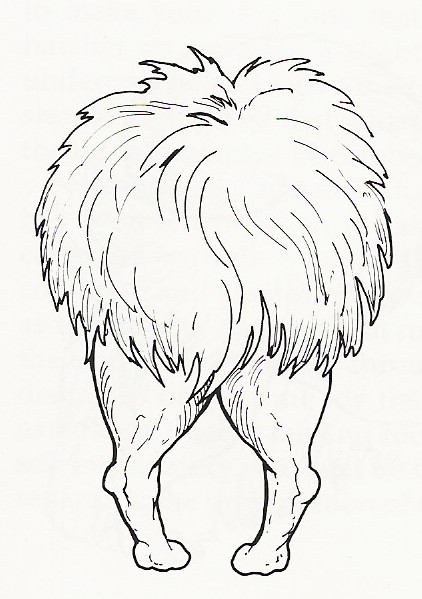
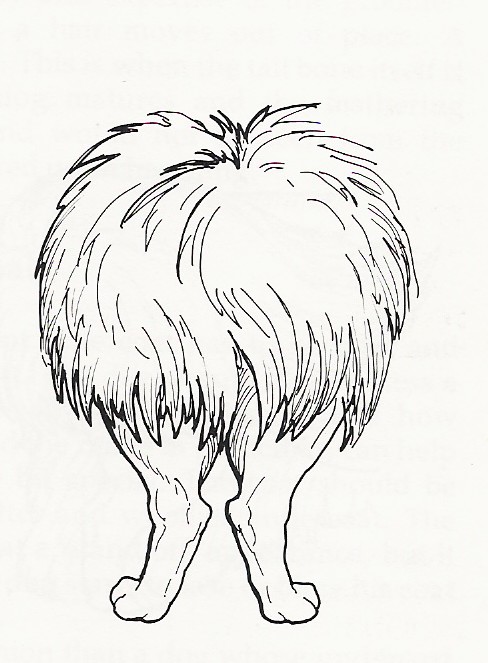
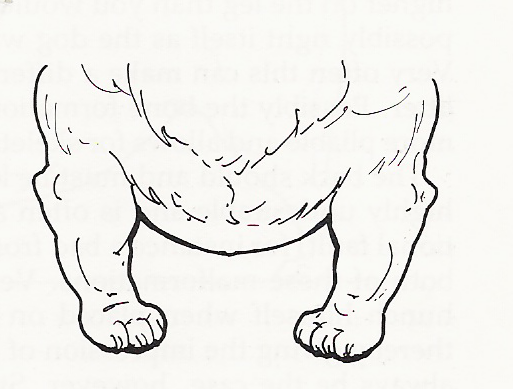
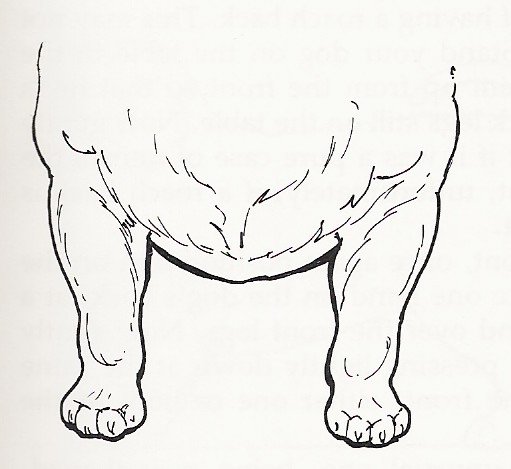
Leave a Comment
You must be logged in to post a comment.